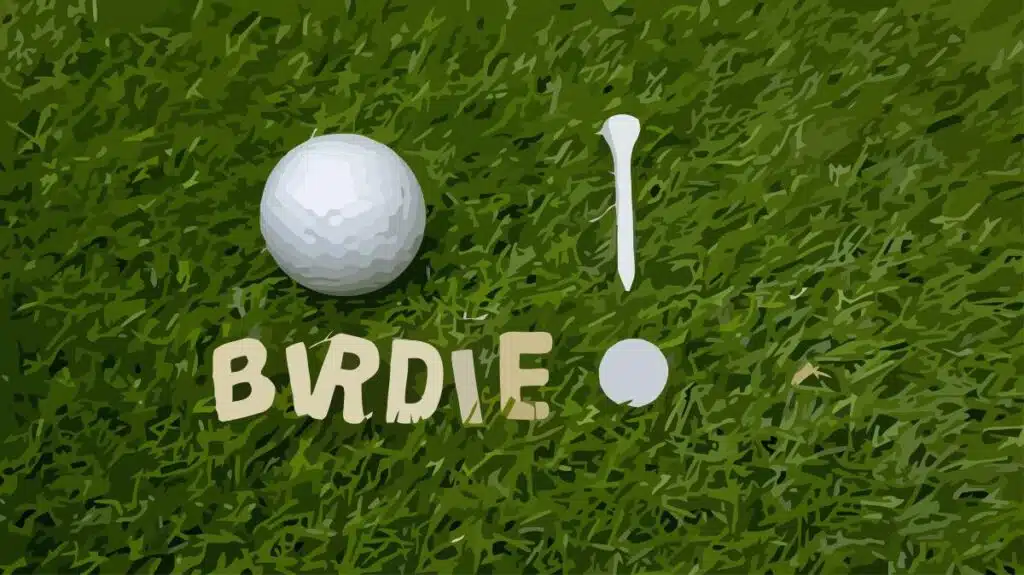Let’s be clear about this first and foremost – there’s nothing embarrassing about not knowing what is a birdie in golf, or any other such commonly used golf term. There’s always a first, right? And to be honest, you don’t just become an “expert” or seasoned golfer even if you know the exact meaning of these terms. The execution part of it is what matters!
What is A Birdie In Golf? – A birdie in golf is a score that is one stroke under par on an individual hole. In other words, when the player hits the ball into the hole with one fewer shot than par, it is called a birdie.
So how about we get to know the meaning and significance of 1-under par (i.e. birdie) in golf for you to emulate this knowledge in the form of leveling up your golfing skills on the turf! Because just the feeling of the golf ball rolling in that birdie putt, which is sure to lower your scores by the way, is so gratifying!
Related articles:
In This Post
One of the Most Common Golf Scoring Terms – ‘Birdie’ (what it means exactly)
A birdie is a golf score of 1-under par of a given hole. This just means that you need to make 1 less stroke than the par value for that hole.
Scores required for birdie include the following…
- 2 strokes on par-3.
- 3 strokes on par-4.
- 4 strokes on par-5.
- 5 strokes on par-6 (although par-6 holes are quite rare).
“She needs to birdie that hole for winning the game!” – Well, now you what this means!

Where Does ‘Birdie’ Come From – Its Roots In Golf
If you guessed that the term came from the word ‘bird,’ you guessed right indeed. ‘Bird’ was used back in the days, in the 1800s and early 1900s, for describing shots that were exceptionally good.
Fifty Years of American Golf – a book by Harry Brownlow Martin mentions the classical moment in 1903 at the Atlantic City Country Club (New Jersey) when William and Ab Smith, two brothers, were playing a game of golf together with a friend.
Ab Smith made the second shot within six inches of the par-4 hole. And then he used the words… “That was a bird of a shot…”
Ab Smith then suggested that he who plays an under-par hole earns double compensation. And it was Ab Smith only who holed the putt. Henceforward, all the future 1-under par scores were labeled as “birdie.”
This golf term, no doubt, then caught on at rapid speed after that. Bernard Darwin, a prominent British golf writer, after visiting America in 1913, spoke about the actual definition of birdie in the Country Life issue of that same year.
How to Score A Birdie In Golf?
You need at least 1 good stroke per hole for a birdie. So here are some very useful tips to increase the likelihood of achieving a birdie when playing par-4!
Several shots are hit for a par-4 hole, so let’s look at each of those shots…
First Shot
Improve your strategic planning of the first shot, which is the most commonly made by a driver since this particular golf club produces the longest distance. Therefore, make sure that your golf driver is a force to be reckoned with, such as these TaylorMade or Callaway drivers.
And about your strategic planning, it should include taking into consideration the following factors…
- Wind (headwind of 10 mph reduces distance by 12 yards of a shot of 140 yards while tailwind of 10 mph increases distance by 7 yards).
- Always choose a target when executing your golf swing. You need to aim right if you want your swing to respond better, thus pushing your shots straighter and longer.
- A shorter hole is easier, hence it’s advantageous to start from a shorter or more forward tee box.
Second Shot
Typically shorter, distance-wise, par-4 second shots are hit using an iron (top Callaway irons and top TaylorMade irons also reviewed) or a wedge.
So how to go about this shot? When you hit from short grass i.e. the fairway, factor in where the flag’s located on that green. This way, you then know where to land your shot for an undemanding birdie putt.
If it’s located in front of the green, play aggressively unless there are bunkers and hazards surrounding the back and sides of that green. And if the flag’s at the back, hit slightly more conservatively to avoid trouble.
Behind the bunker requires you to check the needed distance for carrying the bunker (you can use a golf rangefinder to get exact distances). At this point, add 5 yards past the minimum carry distance of the golf ball. Now, holing out a ‘birdie’ bunker shot is okay too but then this will be more difficult in comparison to a birdie putt.
Next to the water hazard means aiming toward the opposite side of the hazard. Once again, a birdie putt is relatively much easier than hitting the shot out of a water hazard into a hole.
Third Shot
Now comes the final shot that needs to be holed in for scoring a birdie on par-4!
Some useful tips for this final third shot…
- Doesn’t matter if the ball is close to or far from that hole, stick to the putting line. In the case of the latter, long putt (more than 25 feet), you’re most unlikely to nail it. And this means hitting a lag putt.
- You should be able to judge the aim of the putt, meaning how far left or right of that hole. The majority of putts are hardly ever straight!
- What’s the speed of the green, slow or fast? A too-hard putt rolls through the break while a too-slow putt breaks too much.
- If the golf ball has landed onto the fringe, you simply have to putt it then. But if it’s a few yards or feet off the green, use your pitching wedge or 9-iron for hitting a chip shot (low, rolling) toward the hole. The rolling of the ball means higher chances of it sinking into that hole as opposed to the ball flying or bouncing into the hole.

Birdies Are Quite Difficult to Score In Golf
A ‘birdie’ may be a commonly used golf scoring term but that doesn’t mean it occurs very frequently during a round of golf. High handicappers achieve even fewer birdies than mid-handicap golfers. So mostly it’s low handicappers (PGA Tour pros and expert golfers) that score birdies. Even this is rare, to be honest. But whenever it happens, it’s a cause for celebration.
Based on PGA Tour statistics, only five birdies are made by top professionals in each round. That’s how hard it is to achieve a birdie. And the ones that are actually scored take place on par-5 holes. And this only makes sense since most top players are easily able to get onto par-5 in just two shots because of the outstanding distance they’re now capable of generating.
Hence, 2 further shots recorded as a birdie on their scorecards!
Are Birdies Good In Golf?
They’re a cause for celebration, as I mentioned before. So scoring a birdie is, in fact, a big deal. Because it’s a result of the combination of expert skills and luck!
For a birdie, you get only two strokes, out of which 1 ought to be very well hit (on par-3). For par-4, 3 strokes while 4 strokes on par-5.
As for luck, it presents itself as, for example, an unexpected cool breeze, a bounce off the bunker, a deflection off a tree, or simply a rock on that putting green.
You obviously can’t rely on luck but there are instances when these unexplainable things happen. And oftentimes, you cannot ever witness them since you’re far off or your view is blocked by dense trees or elevation changes.
How Many Strokes Is A Birdie?
One stroke!
A birdie is recorded as 1-under par, so that implies one lesser stroke than the par value of that hole.
What’s Better, An Eagle or A Birdie?
Based on the definition of an eagle (2-under par) and the definition of a birdie (1-under par), both are not common occurrences in golf. Birdie is higher (thus, a better shot) under par than eagle. Although you have to be really highly skilled and even very, very lucky to score both.

Last Words
I hope you now know the meaning, importance, and challenges of scoring a birdie. No denying that making a birdie is no easy task to accomplish, even if you’re a PGA Tour player. Even pro-level golfers record very few birdies!
But you know what, you don’t need to score a birdie, thankfully, for breaking 100, 90, or 80!
Birdies may be a cause for celebration but these are not expected out of you, no matter how high up the golfing ladder you are. So don’t make yourself feel too bad whenever you miss birdie putts.
Reference: FAQ – Golf History Questions (usga.org)

